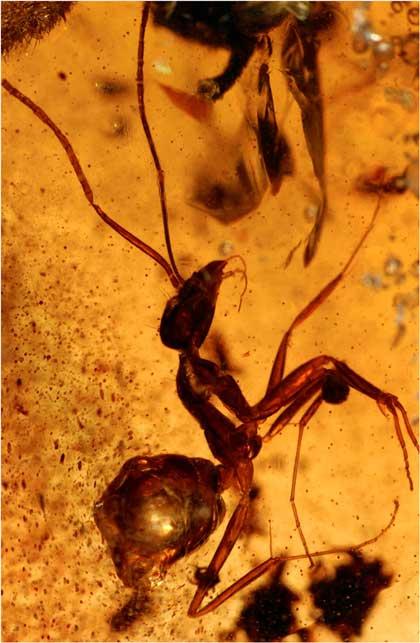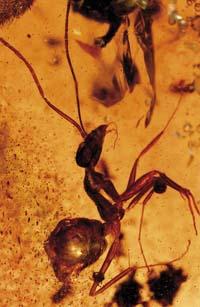Insects ingested by amber
2010/10/26 Aulestiarte Lete, Izaro - Elhuyar Zientziaren Komunikazioa

In western India, within the 50-million-year-old amber, fossils of 700 ancient insect species have been found, mostly in very good condition. The study was conducted by a group of German researchers, to whom corresponds the spectacular photograph above. Not only is it beautiful, but it is an important discovery, which has made it possible to verify that India's biodiversity did not develop in isolation, as previously thought.
Researchers have extracted more than 136 kilos of amber from the deposits. The resin, which subsequently fossilized and became amber, originates from a family of tropical trees spread worldwide. Fossils of well-preserved insects, arachnids and crustaceans belonging to more than 55 families, as well as plant and fungal remains have been found in amber.
The researcher has surprised the relationship of these insects with the current Asian and Australian species. And they have seen that they are also related to other species that have been found in Mexico or Central America long ago. Thus, they conclude that 50 million years ago India and Asia were not completely separated. “India was isolated, but we are not clear when or how long. India's amber has a primitive record of a multifaunal tropical forest. We have obtained biological evidence that indicates a certain biotic link,” the researchers say.
Image courtesy of: University of Bonn.

Gai honi buruzko eduki gehiago
Elhuyarrek garatutako teknologia





